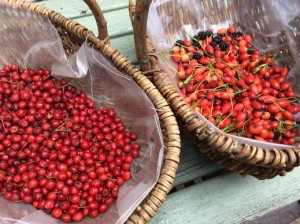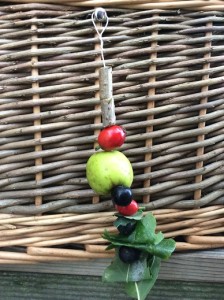
Autumn is my favourite season of the year; I enjoy the changing colours of the woodlands, dewy spider webs and especially the ‘wild food’ treasures hung brightly within hedgerows. ‘Blackberrying’ is often one of our first experiences of nature. Even toddlers quickly learn how to identify blackberry fruits!
Foraging for wild foods is a wonderful activity for getting outdoors in all weathers to learn about and connect with nature. It increases our observational and sensory skills and deepens our relationship to the natural world.
It also teaches us to be mindful. Foragers need to be considerate and respectful, and to sustainably gather only common, abundant species and to take only what they need. In the New Forest, on Forestry Commission land, the over-foraging of fungi through commercial collecting has resulted in ‘no picking’ guidance. This precautionary approach is due to the highly protected landscape and ecology of the Forest. Gathering fungi to eat also requires expert ID skills, and a mistake can result in serious consequences!
Fortunately, plants and berries are easier to identify than fungi. All foragers must also be able to confidently identify and teach about potentially hazardous plants such as yew berries. Poisoning from ingestion even in small quantities can cause nausea, vomiting and stomach cramps, and in large amounts potentially dangerous. Foraging therefore helps us to hone our identification skills, to question and learn about properties of plants and local lore. Here are some activity ideas to get you started:
Friend or foe? There are many poisonous lookalikes! To help gauge our group’s knowledge (and it’s a great icebreaker activity too) ask them to match up laminated photos of different fruits and berries with the correct tree/shrub by their leaves. Make two sets of photos for group challenges. Importantly, this activity teaches visual recognition using colour and shape; the round, bright red berries of holly, rowan and hawthorn look very similar but their leaves are very different.
I-spy spotters guide: For younger children create a photo guide of most the common fruits, nuts and seeds in your area and ask them to see how many they can find. Emphasise to look but not pick.
Foragers charm: Using thin florists wire, thread on different edible fruits and nuts along with associated leaves to help with identification. Use a small hand drill to make holes through acorns (taste best roasted), sweet chestnuts, rosehips and crab apples.

Go on a guided foraging walk: Check out New Forest walking festival for our wild food events. Sunday 15th and 29th October 2017
Preserve the seasons: There are lots of wonderful recipes to learn about the setting points for making jams and jellies. Be safe – always refer to a selection of good identification book such as ‘Food for Free’ by Richard Mabey which also has recipe ideas.
Any other foraging activity ideas are always welcome! Happy foraging!
